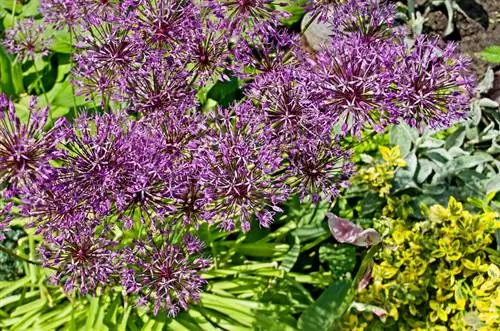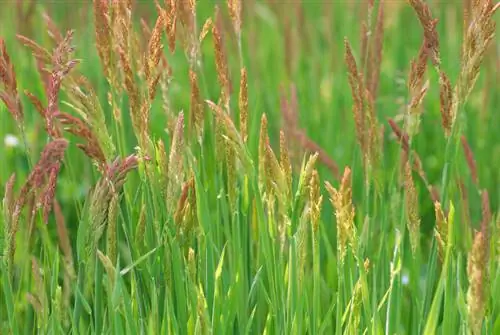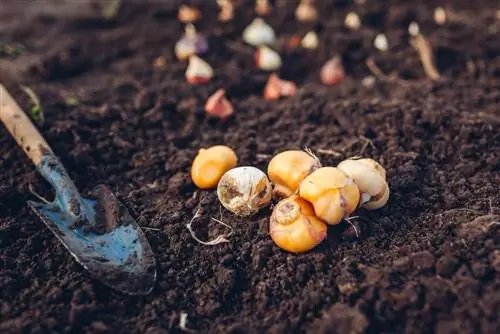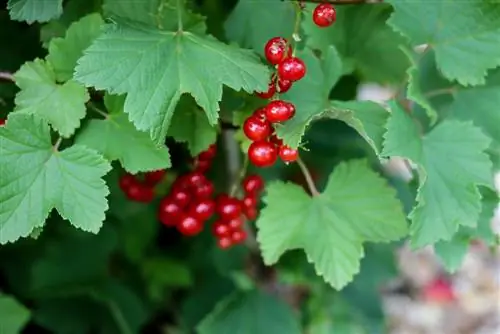- Author admin [email protected].
- Public 2023-12-16 16:46.
- Last modified 2025-01-23 11:20.
Ornamental onion or simply allium, as many gardeners call it, is undemanding and easy to care for. With its almost extravagant appearance, it looks great and attracts attention. So why not just put him in the bed?

Which plants go well with ornamental garlic in the bed?
Ornamental alliums and plants with similar location requirements, such as lavender, oregano, comfrey, lady's mantle, sedum, cranesbill, floribunda roses, phlox, catnip, coneflowers, cushion asters, chamomile and low ornamental grasses, harmonize in the bed.
Finding suitable partners for underplanting
Anyone who is not yet familiar with ornamental onions will look worried when they see that the plant is already turning yellowish leaves around April/May. This is completely normal. However, it doesn't look good and for this reason many gardeners underplant the ornamental onion with ground cover or low-growing, clump-forming perennials.
All plants that have similar location requirements are well suited for planting under the ornamental onion location:
- Lavender
- Oregano
- Comfrey
- woman's coat
- Sedum
- Storksbill
- Flower roses
- Phlox
- Catnip
- Coneflower
- Cushion Asters
- Camomile
- low ornamental grasses
Which varieties are suitable for beds?
Basically all types of ornamental onions and varieties of ornamental onions are suitable for beds. It depends on where you want to plant the ornamental onion. Should it be in the foreground of the bed? In the background? Or would you rather be in the middle and between other perennials?
For the foreground you should choose low ornamental allium plants such as the dwarf ornamental onion. The tall, giant ornamental onion is ideal for the background. The star ball onion looks great in the middle of the bed and the golden onion is also not to be despised when combined with red-flowering perennials.
Fertilize and water regularly
The ornamental garlic in the bed needs regular care. This should go without saying:
- provide with compost or other complete fertilizer in spring
- water abundantly during the budding phase
- Avoid waterlogging
- do not remove leaves that turn yellow
- if applicable cut off the old inflorescences
Protect from snail damage
If the ornamental garlic is still very young or has just sprouted in spring, it is delicious food for snails. They are all too happy to nibble it all the way down. If your bed is susceptible to snail infestation, protect the ornamental onion in spring with a snail fence (€95.00 on Amazon) or similar. From May you can usually remove the protection.
Tip
In rough locations and for sensitive varieties, you should place a protective layer of brushwood over the bulb area in the ground in late autumn!






